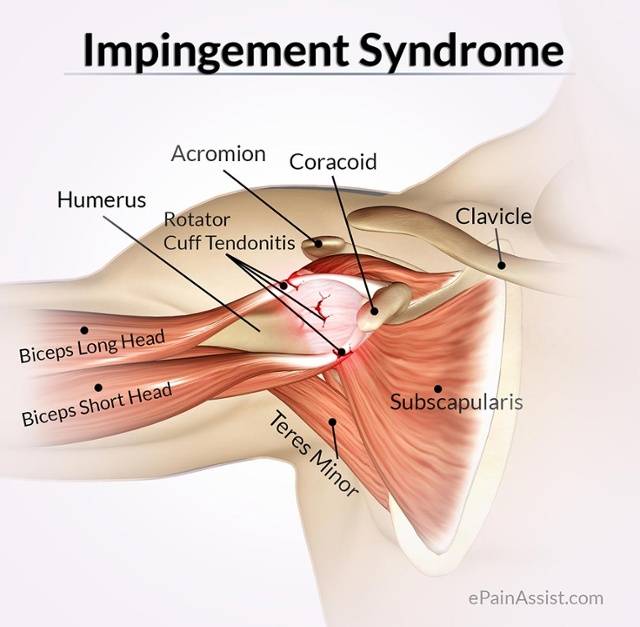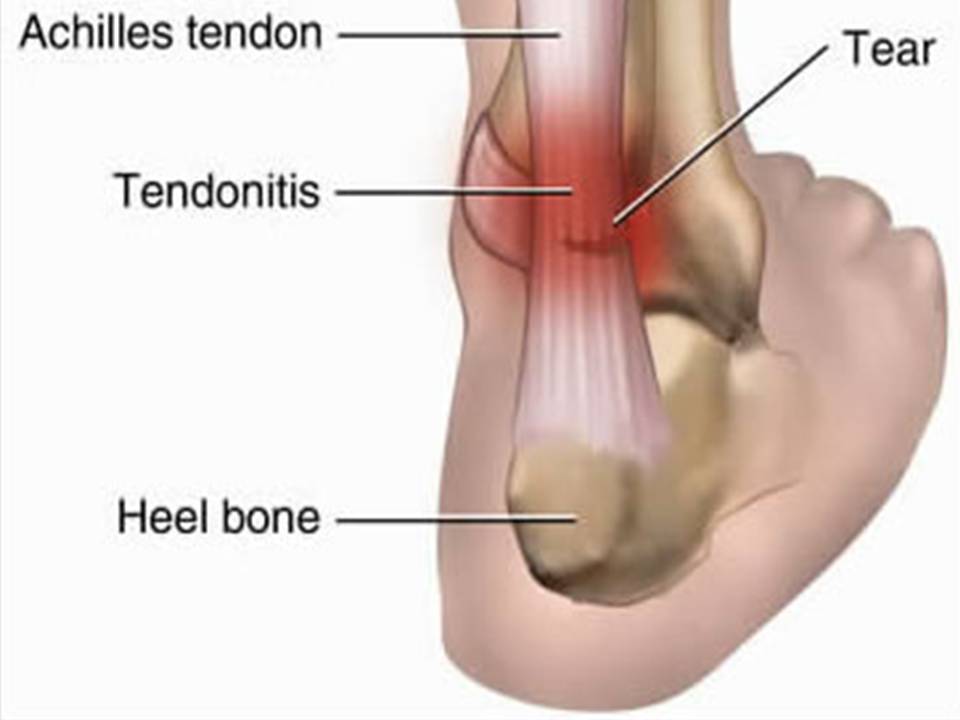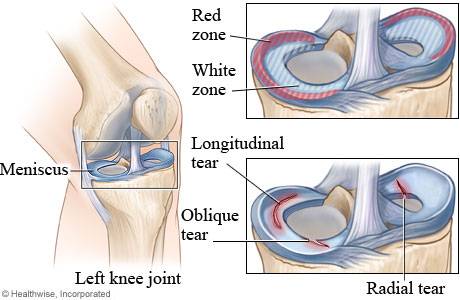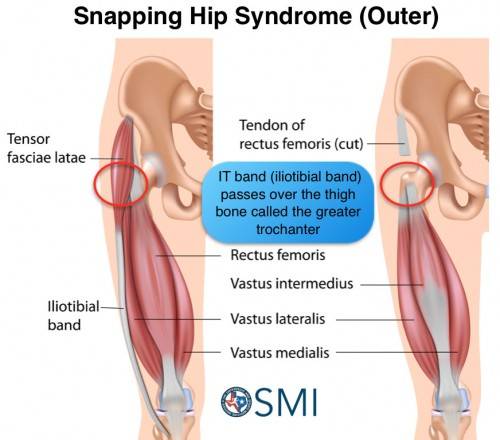As a dancer, your muscles, joints, and bones are under repeated stress from movement. While this does increase the strength of your body overall, it also puts you at risk for injury due to the repetitive motions and strenuous activity of dancing. The last thing any dancer wants is for their career (or favorite hobby) to end due to an injury that could have been prevented! While there is no silver bullet that can eliminate the risk of injury, there are steps that you can take to minimize the risk. Here are four of the most common dance injuries and some steps you can take to prevent each:
1. Rotator Cuff Tendonitis and Impingement Syndrome
 Rotator cuff issues are a common shoulder injury for any athlete whose sport calls for repeated shoulder motions. In fact, we’ve already talked about the prevalence of this injury in baseball pitchers (link to baseball blog when live).
Rotator cuff issues are a common shoulder injury for any athlete whose sport calls for repeated shoulder motions. In fact, we’ve already talked about the prevalence of this injury in baseball pitchers (link to baseball blog when live).
Dancers also often suffer from this type of injury. Choreography that requires extensive use of the arms can lead to irritation or tears in your upper arm tendons.
Rotator cuff tendonitis (also referred to as impingement) can follow a partial tear, or come on gradually due to overuse. The tendons of the rotator cuff muscles becoming impinged as they pass through the narrow subacromial space causes this type of injury. When subjected to repetitive pinching, tendons become irritated and inflamed which could lead to a thickening of the tendon and eventually a rotator cuff tear.
How can I prevent this injury?
The best way to prevent rotator cuff injuries is by stretching your shoulder before and after dancing. Before every practice or show you should make sure to adequately stretch your shoulder with some dynamic stretches such as arm circles or swings. After every practice or show, make sure to do some static shoulder stretches. Stretching both the anterior and posterior portion of the shoulder will help minimize the chance of injury and maximize range of motion.
2. Achilles Tendonitis
 Here’s another injury we’ve talked about before: Achilles tendonitis. (Anyone see a pattern here? Yes, dance shares common injuries with many other sports.) Achilles tendonitis is caused by any repetitive activity that strains the Achilles tendon and leads to painful inflammation. This injury is most likely to occur in dancers who are training extensively during a short period of time, dancing on a hard floor or putting pressure on a tightened calf muscle. In addition, weight pressure or unbalanced range of motion will predispose dancers to this type of tendonitis.
Here’s another injury we’ve talked about before: Achilles tendonitis. (Anyone see a pattern here? Yes, dance shares common injuries with many other sports.) Achilles tendonitis is caused by any repetitive activity that strains the Achilles tendon and leads to painful inflammation. This injury is most likely to occur in dancers who are training extensively during a short period of time, dancing on a hard floor or putting pressure on a tightened calf muscle. In addition, weight pressure or unbalanced range of motion will predispose dancers to this type of tendonitis.
How can I prevent this injury?
There are a few ways that dancers can minimize the risk of Achilles tendonitis.
- First, it’s incredibly important to practice proper technique. In general, dancers with improper technique are more likely to develop injuries, including Achilles tendonitis. Make sure you press your heels down when jumping and use proper alignment in turnouts and you will decrease the risk of this type of injury.
- Secondly, pay attention to the environmental factors in your studio and stages. Unsprung floors, raked stages, and cold temperatures are all risk factors.
- Finally, try to avoid excessive training. I know, I know…easier said than done when you’re practicing for a huge performance, right? If you have to engage in excessive training, try to make sure it isn’t prolonged and that you are properly stretching and recovering every time.
3. Meniscus Tear
 As a dancer, your knees sustain a lot of damage. You’re constantly jumping, landing, twisting, etc. during your routines. These movements can all cause tears in the cushioning of the knee cartilage. Inside the knee joint, the meniscus are two C-shaped pieces of cartilage that protect the joint surfaces of the femur and tibia from grinding against each other. When you damage those C-shaped pieces of cartilage, you have suffered from a meniscus tear. These injuries are caused by sudden trauma to the knee. Minor tears may not be painful right away, but severe tears will be immediately apparent with pain, swelling, and difficulty walking or moving the knee.
As a dancer, your knees sustain a lot of damage. You’re constantly jumping, landing, twisting, etc. during your routines. These movements can all cause tears in the cushioning of the knee cartilage. Inside the knee joint, the meniscus are two C-shaped pieces of cartilage that protect the joint surfaces of the femur and tibia from grinding against each other. When you damage those C-shaped pieces of cartilage, you have suffered from a meniscus tear. These injuries are caused by sudden trauma to the knee. Minor tears may not be painful right away, but severe tears will be immediately apparent with pain, swelling, and difficulty walking or moving the knee.
How can I prevent this injury?
As with Achilles tendonitis, in order to avoid meniscus tears it’s incredibly important to practice proper technique. While you can’t do anything to remove all risk of traumatic injuries, proper technique will help. As athletes, we tend to pay more attention to the moves we don’t know very well and less attention to those we’ve been doing for years. So even though you think you know that jete like the back of your hand, you should still focus on using proper technique each and every time.
4. Snapping Hip Syndrome
Illotibial (IT) band tightness, weakness along the outside of the hip and lordosis can cause snapping hip syndrome. Dancers who suffer from snapping hip syndrome will hear a rubber-band-like snapping sound in the frontal hip joint as the IT band glides over the upper-leg bone. You might experience this sound when dancing, walking or doing any activity that moves your legs. This injury might not be painful right away but can lead to pain and swelling in the hip joint that can affect your dancing.
How can I prevent this injury?
The best way to avoid this is by building up strength in the lower abs, abductor, and hip flexors. Strengthening the muscles and joints around your hip will help protect your IT band and minimize the risk of this type of injury. In addition, make sure you practice proper technique at all times, but especially when in turnout.
Keep in mind that, as a dancer, you are constantly stressing your body and are often asking it to perform in ways that it’s not accustomed.
Following the steps above will do wonders for helping prevent risk, but there’s a lot more you can do to keep your body safe and sound! Download our FREE Day-to-Day Muscle Recovery Checklistfor more tips and tricks for saying in tip-top shape.
If you do happen to end up with an injury, let us help you get it treated faster so you can back to the studio. Take our FREE Injury Assessment and let our injury specialists provide you with some tips and tricks to help you recover quickly.





Leave A Comment